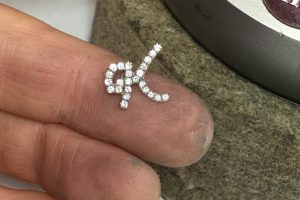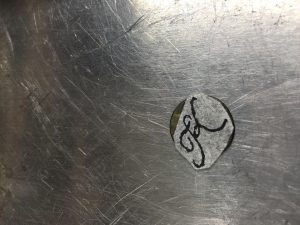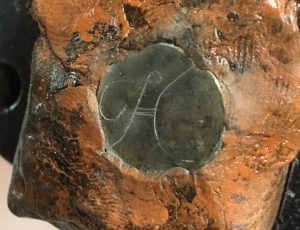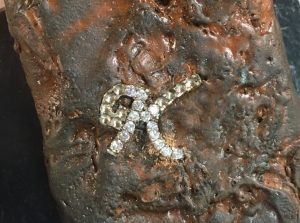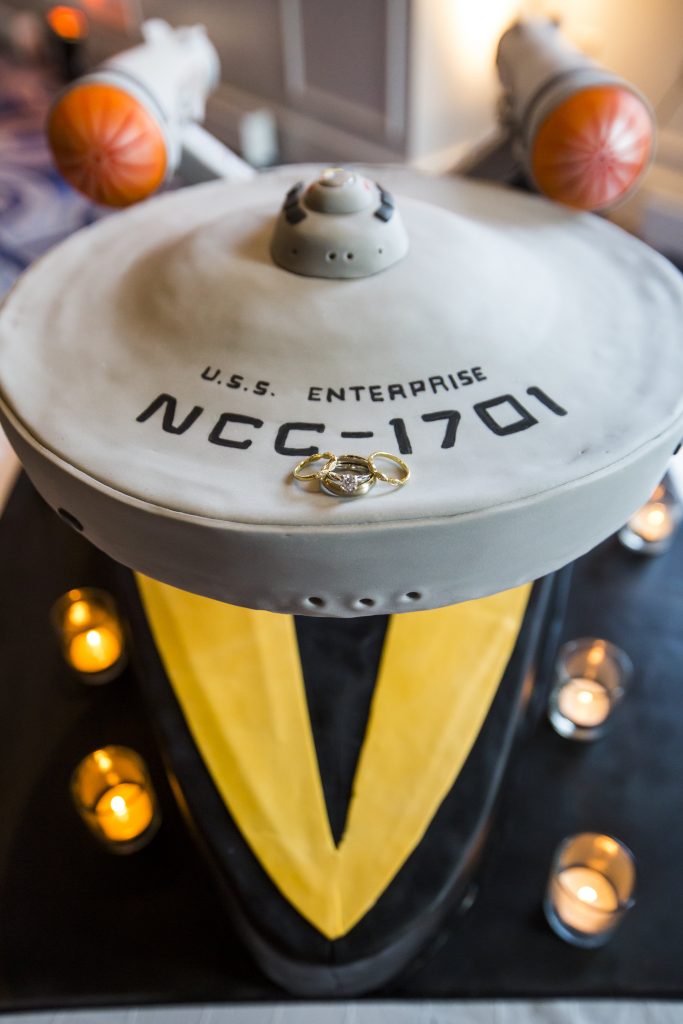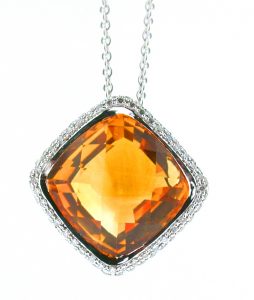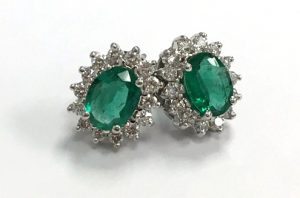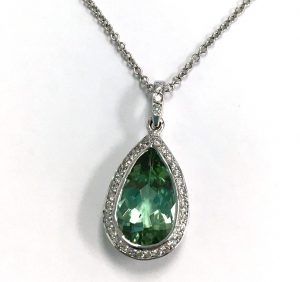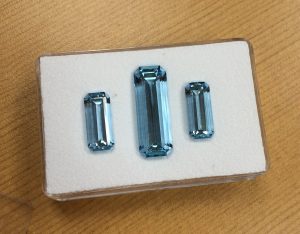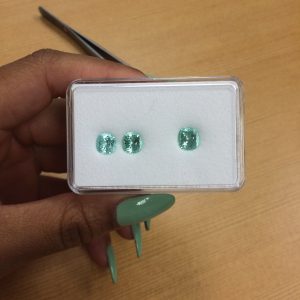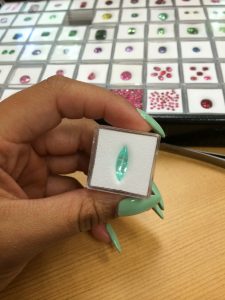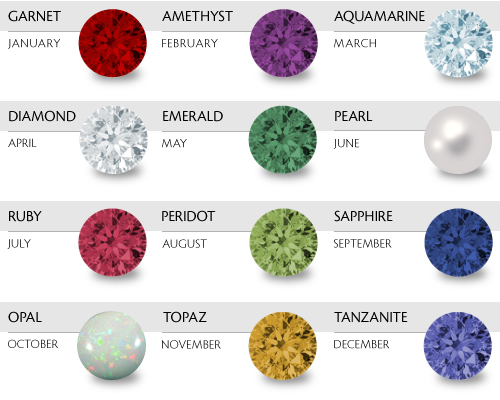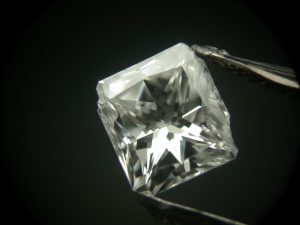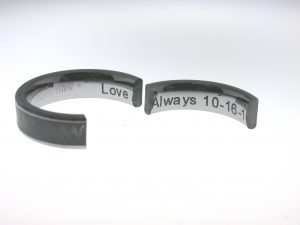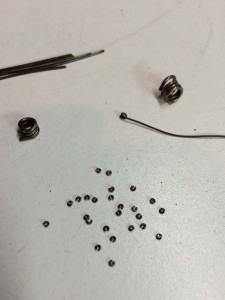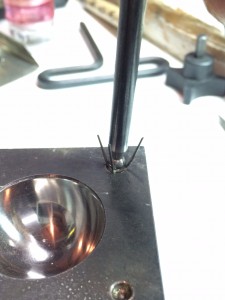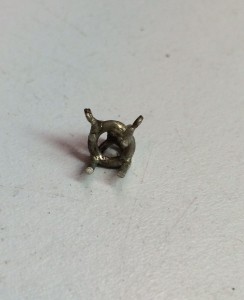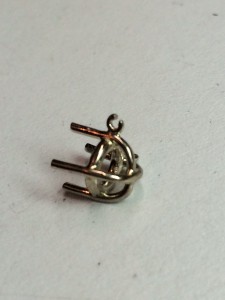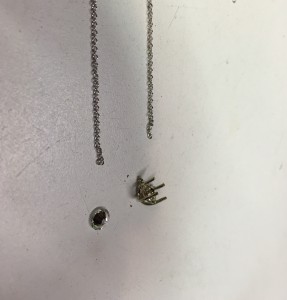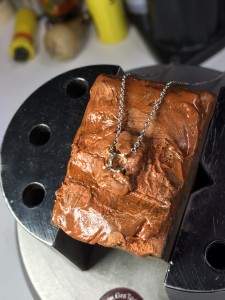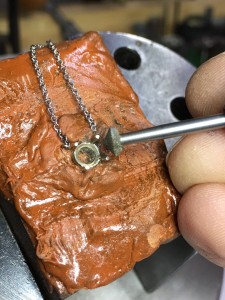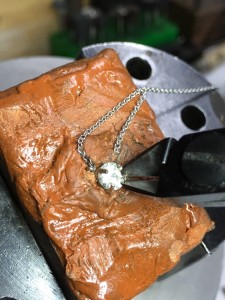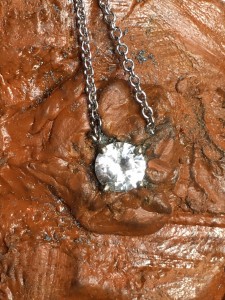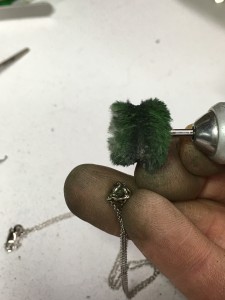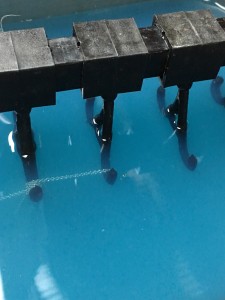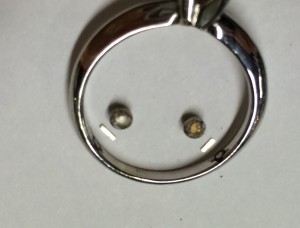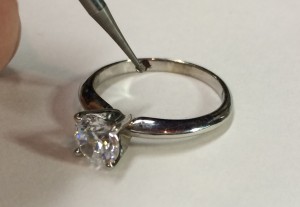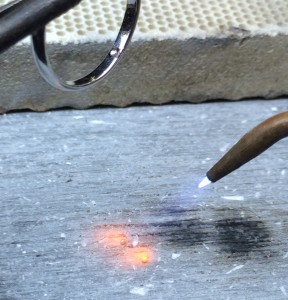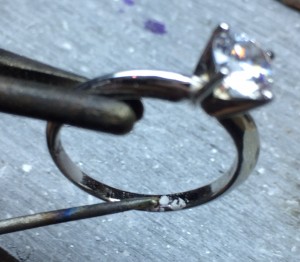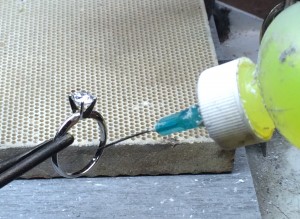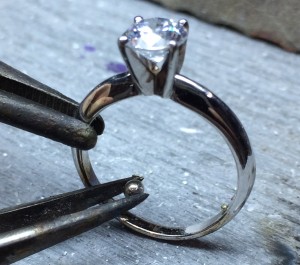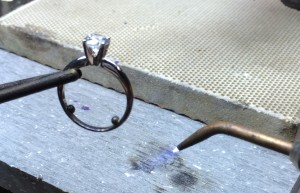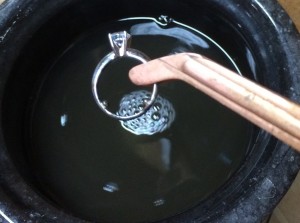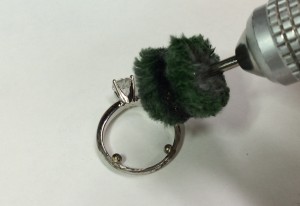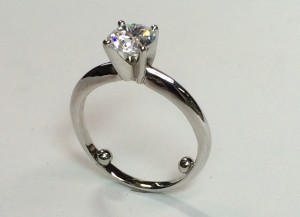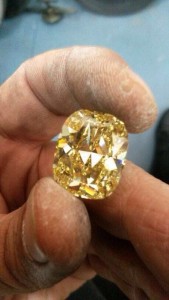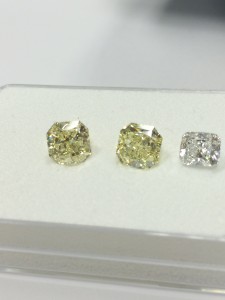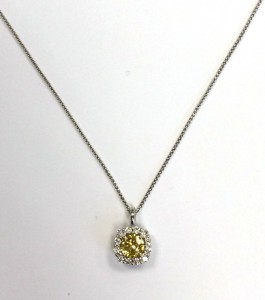It’s good to know the different properties and characteristics of metals so you can make an educated choice regarding which metal will work best for your lifestyle.
The most common metals used in jewelry are silver, gold, palladium, and platinum. Some alternative metals, mostly used in mens jewelry, include tungsten and titanium. Different metals are best suited to certain types of jewelry. Silver is a very common metal used in many types of jewelry, but as it is a soft metal, it is not appropriate for engagement or bridal jewelry.
Most bridal jewelry is made of gold or platinum. There are different shades of gold, the three most common being yellow, white, and rose. Gold also comes in different levels of purity, ranging from 9karat to 24karat. The two most appropriate for bridal jewelry are 14k and 18k, both of which are hard enough to securely hold a diamond in place and withstand years of wear and tear.
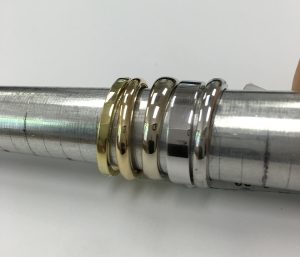
From left to right: 18k yellow, 14k yellow, 14k white unplated, 14k white plated, and platinum.
The majority of our customers usually find themselves debating between 14k white gold and platinum. Both are great choices for bridal jewelry: the main differences are the price and how the metals wear over time. White gold is naturally a bit yellower than platinum, as you can see in the photo above. To give it that platinum-like white finish, white gold is generally plated with rhodium. Both metals get scuffed and scratched from the normal wear and tear of daily life, but the maintenance involved in maintaining their original luster is a bit different. Once the plating wears off of a white gold ring, the jeweler will buff the ring to get rid of any scuffs or scratches, and then he will re-plate the ring with rhodium. A platinum ring can simply be buffed and polished to get back to its original finish, but technically you are losing a little bit of metal every time you choose to have it refinished.
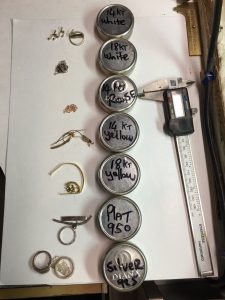
A comparison of the different metals that are commonly used to make jewelry.
Differences between the karats of gold are more evident in yellow and rose gold. The karats correspond to the purity of the gold, so a higher karat generally means the color will be more intense. An 18 karat yellow gold ring will be yellower than a 14 karat ring. White gold, whether 14 or 18 karat, will look the same once plated with rhodium. Certain blends of white gold include a nickel alloy, which can cause allergies in some people.
Palladium is becoming a more popular choice as a white gold alloy due to its hypoallergenic properties and its naturally white color, which results in a white gold that requires no rhodium plating. Palladium, which is part of the platinum family of metals, has been used as a precious metal for jewelry making since the late 1930s. Mens bands can be made using pure palladium, but palladium women’s jewelry (or any more intricate type of jewelry) is generally made from palladium-based white gold.
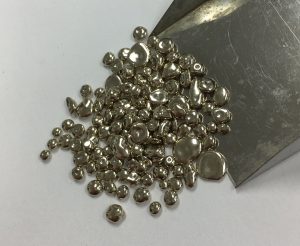
Palladium-based 14 karat white gold in nugget form.
Some things to ask yourself when trying to decide on a metal: which color suits you best? Yellow, rose, white? If you decide on white, are you allergic to nickel? If so, let your jeweler know. Perhaps palladium or platinum will be a better choice for you. If you are deciding on a ring, will it be worn next to an existing ring you already own? For example, if you have a platinum ring and are considering buying another ring to wear with it, getting the new ring in platinum is probably a good idea. A platinum ring and a white gold ring worn together will wear in different ways. Some people are bothered by the difference in color, and some aren’t. It’s all about your preferences and what you feel will work best for you!



